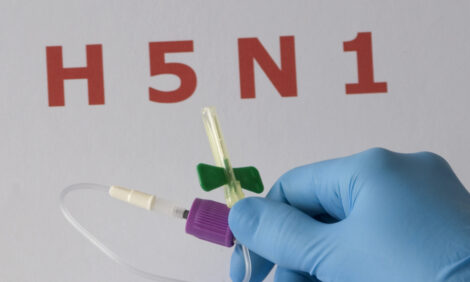



Penn State Helped Create Salmonella Control Programme
US - Although a Salmonella scare and egg recall is taking place across much of the country, Pennsylvania-produced eggs are safer to eat, according to poultry experts in Penn State's College of Agricultural Sciences.That is thanks to a programme Penn State researchers helped Keystone State egg producers start almost two decades ago, which was the model for the national program to guard against egg contamination implemented just this July.
"If the federal regulations to protect against Salmonella enteritidis contamination of eggs had been in place earlier, the current outbreak and egg recall may not have occurred," said Paul Patterson, professor of poultry science.
Pennsylvania was the first state in the nation to institute steps to reduce the risk of Salmonella enteritidis with flock-testing and management programmes in 1992. The state Department of Agriculture provides oversight, technical advice and financial assistance for the Pennsylvania Egg Quality Assurance Program, and the state Department of Health participates in an advisory capacity.
Food-safety and poultry experts from Penn State and the University of Pennsylvania also take part in the risk-reduction programme, widely known as PEQAP. Although it does not guarantee eggs are free of Salmonella enteritidis, the programme assures that producers implement management and monitoring practices that reduce contamination. In return, the eggs of producers that meet its standards are certified with a logo that appears on egg cartons.
"Preventive measures include placement of only Salmonella enteritidis-free chicks, intensive rodent control, cleaning and disinfecting of poultry houses between flocks, and environmental monitoring of pullet and layer houses – with repeated testing of eggs from any houses that test positive," Professor Patterson said.
The Pennsylvania programme, which has dramatically reduced the incidence of Salmonella enteritidis detected in eggs, was developed in response to an increasing number of outbreaks that were traced back to eggs. Reports of Salmonella enteritidis to the Centers for Disease Control and Prevention increased six-fold from 1976 to 1986, according to Professor Patterson. As the numbers rose, he said, Pennsylvania egg producers became increasingly concerned by salmonella outbreaks and deaths.
"Pennsylvania producers didn't want to sell eggs that would hurt people," he said. "So they got very aggressive about reducing Salmonella enteritidis on their farms."
During a two-year research project beginning in 1990, Penn State found that an egg-assurance programme must include rodent control, Professor Patterson noted, adding that rodents bring Salmonella to chickens. "In the '90s, we found that rodents defecating in the feed troughs could pass Salmonella enteritidis on to the hens and eggs."
What emerged was a multi-step approach to lowering the risk of egg contamination. Measures include testing baby chicks coming onto farms for Salmonella, controlling rodents (hen houses are tightly sealed) and testing the hen-house environment repeatedly for Salmonella enteritidis (those that test positive are cleaned and disinfected, and the eggs are discarded or sent for pasteurisation).
Professor Patterson pointed out that once PEQAP moved beyond its pilot phase, it quickly showed its effectiveness. In 1992, 38 per cent of Pennsylvania flocks tested positive for Salmonella enteritidis. Today, about eight per cent test positive. Environmental controls have been even more successful. In 1992, 26 per cent of samples from Pennsylvania hen houses tested positive. Today, that is down to one per cent.
"The risk of exposure from a single egg always was statistically very small – even from eggs laid by hens in flocks where Salmonella was present," he said. "In 1992, just 0.026 per cent of eggs from infected flocks, or 2.6 eggs in 10,000, tested positive for Salmonella. Today, that incidence is down more than 50 per cent, to 1.2 eggs per 10,000."
PEQAP requires third-party monitoring, and Professor Patterson serves on a compliance board. "If a business is not complying, they are brought before a board of advisors made up of industry and advisory personnel," he said. "They are given an opportunity to address and fix problems, but if they don't they can lose their certification. And clearly, more and more people, grocery chains, restaurants and food-service businesses are demanding certified eggs."
In Pennsylvania, poultry flocks are continuously monitored for disease with tests conducted by the Pennsylvania Animal Diagnostic Laboratory System, with facilities at Penn State, University of Pennsylvania and the Pennsylvania Department of Agriculture.
It made sense for Pennsylvania and Penn State to take the lead in researching how eggs were being tainted with Salmonella and how to prevent their contamination, said Patricia Dunn, senior research associate at the Penn State Animal Diagnostic Laboratory, a veterinarian who specialises in avian disease.
"The state is the biggest egg producer in the Northeast, and Penn State faculty were very instrumental in investigating the origin of Salmonella outbreaks and how they could be prevented," she said.
"The important thing is how early Pennsylvania got started in this program," Dr Dunn said. "I think some farms around the country sat back and waited for the Food and Drug Administration to put this program in place, and others got out in front of it."
Penn State's diagnostic lab also tests sick and dying birds, which helps head off the spread of potentially more dangerous strains of Salmonella as well. "This year it is Salmonella enteritidis making headlines, but next year it may be another strain – they evolve," Dr Dunn said. "What makes this hard is that this strain of Salmonella almost never makes birds sick, so there is no outward clue that Salmonella is present in the birds or the eggs."
To reduce the risk of Salmonella enteritidis – which can cause fever, diarrhoea, vomiting, abdominal pain and sometimes more serious illness or death – Penn State scientists recommend the following:
- Keep eggs refrigerated at or below 45 degrees F.
- Discard cracked or dirty eggs.
- Wash hands, cooking utensils and food preparation surfaces with soap and water after contact with raw eggs.
- Cook eggs until both the white and the yolk are firm, and eat promptly after cooking.
- Do not keep eggs warm or at room temperature for more than two hours.
- Refrigerate unused or leftover egg-containing foods promptly.
- Don't eat raw eggs.









